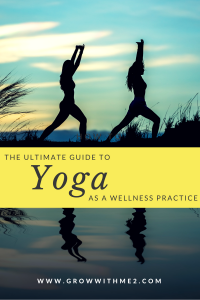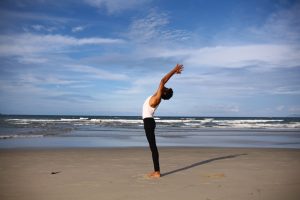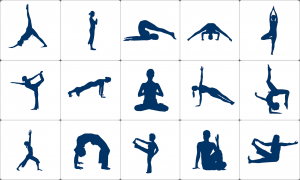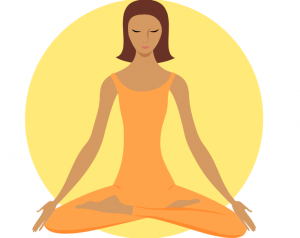I AM BLISS.
I AM LOVE.
I AM ONE WITH GOD.
I SURRENDER.
I AM.

What does doing community service, reading sacred texts, and singing praise songs all have in common? They are all yoga practices, specific to certain styles of yoga. Many people in the United States understand yoga as mainly the exercise of physical postures known as asana, and that is indeed yoga, too. Some people may know that yoga involves special breathing techniques known as pranayama. And others may know that yoga also includes meditation, which at one time in the history of yoga and for some people today is still the main practice of yoga. The other two aforementioned practices are hatha yoga practices, which describes a style of yoga that focuses on physical practices for the sake of self-realization. In essence, there are many ways to do yoga, but they are all in service of attaining the same goal, what is known as the state of yoga. Yoga is the word used to describe this state, and also the term used to describe any practices observed for the sake of realizing this state.
The State of Yoga
The words to describe the state of yoga vary. One such word is “enlightenment,” whatever that means. Other terms include bliss and, my personal favorite, profound peace or “the peace that passes all understanding.” As it says in the Upanishads, “Truth is one; the wise call it by different  names.” We all want the same thing; we just go about attaining it in different ways. We all want the same thing, but we sometimes go about attaining it in unskillful ways. The beauty of yoga is that it is an ancient practice used by many before us to attain this “same thing” using skillful means. We know these means are skillful because (1) we trust the ones before us who attest to the skillfulness and (2) we see for ourselves the positive effects, both immediate and cumulative, of practicing these skillful means.
names.” We all want the same thing; we just go about attaining it in different ways. We all want the same thing, but we sometimes go about attaining it in unskillful ways. The beauty of yoga is that it is an ancient practice used by many before us to attain this “same thing” using skillful means. We know these means are skillful because (1) we trust the ones before us who attest to the skillfulness and (2) we see for ourselves the positive effects, both immediate and cumulative, of practicing these skillful means.
Yoga means union with God, though there are other definitions. The word “God” may conjure up all types of ideas and images depending on the person hearing it and their past associations. One may also have a very particular understanding of God that they prefer based on another system, or organized religion. And that’s fine, too. For this reason, you rarely hear this definition of yoga. But for the sake of transparency and in honor of the ancient roots of the practice, I find it important to honor this “first definition” found in the Vedas. The translation is more like, “yoga is union of individual consciousness with universal consciousness,” or simply union with God. You may call God by any other name. In the yoga tradition, the name does not matter as much; no one name is considered to be the only name by which you can reach God. Also, though yoga means union with God, it is with the understanding that you were never separated from God, you just forget that you are connected, and that’s what causing all of your suffering. In that regard, the practices are a remembering.
Four Main Paths of Yoga
In the Bhagavad Gita, Krishna counsels the warrior-prince Arjuna on the various paths of yoga, listing three (arguably four) main paths. What is interesting in reading the Gita is that Krishna, who represents an incarnation of God, says the best path is always the one he is speaking of at that moment. What this means is that the various paths are all equal in value. The one that is most valuable is the one that best serves your particular needs based on your personal situation and  constitution.
constitution.
- The first path is Karma Yoga, or the path of selfless action. It means to act without attachment to the fruits of our labor, especially praise or fame, for example through community service or social justice work.
- The second path is Jnana Yoga, or the path of wisdom and discernment. A common jnana yoga practice is the reading of sacred texts such as the Bible, Qu’ran, or Bhagavad Gita.
- The third path is Bhakti Yoga, or the path of love and devotion. Singing praise songs to show deep affection to a higher power is one practice of Bhakti Yoga. Respectively, these paths are represented by the hands, the head, and the heart. The practice which is best is whichever one you are practicing based on your particular constitution. For example, I am a very intellectual and mind-dominated person.
- For that reason, I tend to like jnana yoga practices and also the often cited fourth path of yoga, dhyana yoga—the path of meditation. I do sometimes practice bhakti and karma yoga. This means that a practitioner is not bound to only one practice, though consistency in particular practices and a specific path, whichever you choose, will reap the most benefits.
Eight Limbs of Yoga
Now, we’ll turn to another yogic text to get an understanding of what
yoga practice looks like, one that is more popular in the United States—the Yoga Sutras of Patanjali. The Yoga Sutras are a collection of about 200 short verses outlining what yoga is, the means of attaining this goal, and the obstacles to be expected on the path. In the second part of the four parts total, the focus is on practice. In this section, Patanjali outlines the eight limbs of yoga. They are as follows:
- Yama – wise engagement with others
- Niyama – wise engagement with ourselves
- Asana – the physical practice of postures and exercises
- Pranayama – breathing exercises for the expansion of prana, our vital life force
- Pratyahara – drawing the attention inward
- Dharana – one-pointed focus, or concentration
- Dhyana – the state of meditation
- Limbs 5 through 7 comprise a meditation practice
- Samadhi – enlightenment, bliss, profound peace, union with God
As outlined in the Yoga Sutras, this style of yoga is known as Raja Yoga, or the Royal Path. It is also a form of Dhyana Yoga, since it focuses on meditation. This comprehensive system of yoga  nourishes the whole being from outermost to innermost layer, including practices of the body, breath, and mind; how we engage with others to how we are connected to a higher power. It allows us to access our deeper wisdom and remember what we already know deep down to be our deepest truth. Because of the comprehensive qualities and effectiveness of these practices, I consider myself a raja yogi. I hope others will come to the path as they see fit, to attain though skillful means that which we all want.
nourishes the whole being from outermost to innermost layer, including practices of the body, breath, and mind; how we engage with others to how we are connected to a higher power. It allows us to access our deeper wisdom and remember what we already know deep down to be our deepest truth. Because of the comprehensive qualities and effectiveness of these practices, I consider myself a raja yogi. I hope others will come to the path as they see fit, to attain though skillful means that which we all want.
Namaste,
April Caddell, RYT
Share below.
What do you really want for yourself?

About April
April Caddell has been practicing yoga since 2011. She completed a 200-hour training with Cori Martinez of Asha Yoga. She has been teaching yoga since 2015. April teaches a mindfully-aligned vinyasa flow yoga, weaving in themes of yoga philosophy and psychology. Her hope is that students will find in yoga a comprehensive wellness practice that nurtures all layers of their being through mindful movement, breathing exercises, meditation, and self-inquiry. April currently resides in Tuscaloosa, Alabama where she teaches weekly public classes as Yoga Bliss. She is also currently enrolled in a +300/500 hour yoga teacher training with Vira Bhava Yoga. April has both a bachelors and a master’s degree in Women’s Studies and is working on her Ph.D. of Instructional Leadership through the University of Alabama.

Be sure to like us on facebook and join our community of growers facebook group (Angelic SoulFull Growth & Healing) that focus on healing and growing our minds, bodies, souls, and spirits. If you would like to receive our monthly uplifting newsletters, discounts on services, and have access to our growing resource library, sign-up here.
Leave a Reply